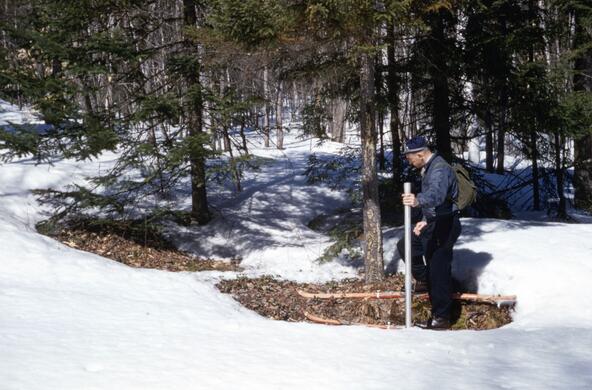My April 9th post on biochar generated an enormous amount of traffic on this website. We all agree that biochar does good things to the soil, in terms of adding to its nutrient content, water-holding capacity, and general fertility. But, biochar advocates were peeved at my suggestion that biochar might not be all that it’s cracked up to be for carbon sequestration. Some newly published research allows us to put some numbers behind that view.
A new paper by Wolf et al. (2015) indicates that each year about 3.3 x 1015 grams of dry matter are generated as agricultural wastes in croplands worldwide. That is somewhat higher than other available estimates, but let’s use it as a liberal estimate of the maximum amount of material that might be used to produce biochar.[1] Let’s assume that these residues have 45% carbon content and that 30% of the residues worldwide are gathered for pyrolysis, noting that in some areas it is better to leave residues for erosion control and for maintenance of soil organic matter. With these caveats, the amount of residues available to make biochar each year would contain 0.44 x 1015 gC.
Then, let’s assume that 60% of the carbon is captured in the biochar and 40% is emitted as CO2 during the pyrolysis process. And let’s assume that 80% of that captured in the char is stable, and thus will persist in the soil as sequestered carbon. These assumptions are consistent with recently published work, as listed below. The result indicates that 0.21 x 1015 gC/yr might be sequestered in the soil.[2]
I’ve not discounted the results by any carbon dioxide released during field operations to gather the residue, transport it to the pyrolysis facility, and return the char to the field. Nevertheless, with liberal assumptions, the maximum apparent rate of carbon sequestration in biochar is only about 2% of the current annual emissions of carbon, as carbon dioxide, to the atmosphere from fossil fuel combustion—about 6 times less than some recent claims.
One might ask if it might be better to use all these crop residues for bioenergy, to reduce our dependence of fossil fuels. Notwithstanding its lower energy content per unit weight than coal, the same crop residues could displace about 2.5% of the CO2 released by using coal to generate electricity.
Listen carefully to what you may hear about biochar. No doubt, biochar is useful to improving soil health, but it does not appear likely to offer much to mitigating climate change. Nevertheless, it should remain part of the large array of options that we need to consider to lower the accumulation of carbon dioxide in Earth’s atmosphere, and better science will help.
Guy Lomax, Bronson Griscom and Joseph Fargione—all from the Nature Conservancy—collaborated in the preparation of this entry.
References
Gurwick, N.P., L.A. Moore, C. Kelly and P. Elias. 2013. A systematic review of biochar research, with a focus on its stability in situ and its promise as a climate mitigation strategy. PLoS One 8(9): e75932
Herath, H.M.S.K., M. Camps-Arbestain, M.J. Edley, M.U.F. Kirschbaum, T. Wang, and R. Van Hale. 2015. Experimental evidence for sequestering C with biochar by avoidance of CO2 emissions from original feedstock and protection of native soil organic matter. Global Change Biology-Bioenergy 7: 512-526.
Hunt, N.D., S.T. Gower, K.Nadelhoffer, K. Lajtha, K. Townsend, and K.R. Brye. 2015. Validation of an agroecosystem process model (AGRO-BGC) on annual and perennial bioenergy feedstocks. Ecological Modeling. Doi: 10.1016/j.ecolmodel.2015.10.029
Roberts, K.G., B.A, Gloy, S. Joseph, N.R. Scott, and J. Lehmann. 2010. Life cycle assessment of biochar systems: estimating the energetic, economic, and climate change potential. Environmental Science and Technology 44: 827-833.
Santin, C., S.H. Doerr, E.S. Kane, C.A. Masiello, M. Ohison, J. M. de la Rosa, C.M Preston, and T. Dittmar. 2015. Towards a global assessment of pyrogenic carbon from vegetation fires. Global Change Biology 22: 76-91.
Wilhelm, W.S., J.M.F. Johnson, D.L. Karlen, and D.T. Lightle. 2007. Corn stover to sustain soil organic carbon further constrains biomass supply. Agronomy Journal 99: 1665-1667,
Wolf, J., T.O. West, Y. Le Page, G.P. Kyle, X. Zhang, G.J. Collatz, and M.L. Imhoff. 2015. Biogenic carbon fluxes from global agricultural production and consumption. Global Biogeochemical Cycles doi: 10.1002/2015GB005119
Woolf, D., J.E. Armonette, F.A. Street-Perrott, J. Lehnamm and S. Joseph. 2009. Sustainable biochar to mitigate global climate change. Nature Communications doi: 10.1038/ncomms1053
[1] 3.3 x 1015 g of biomass contains about 1.5 x 1015 gC, which represents about 38% of the net primary production (plant productivity) estimated for agricultural lands worldwide.
[2] For comparison, that amount of agricultural biochar would roughly equal all of the estimated production of pyrogenic carbon (i.e., charcoal) added to the soil each year by natural wildfires worldwide.







